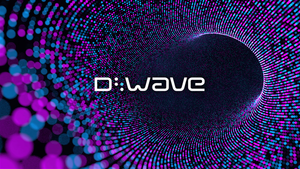
As the Artificial Intelligence (AI) revolution accelerates, two companies, Nvidia (NASDAQ: NVDA) and CoreWeave, stand at pivotal junctures, each offering a distinct proposition to investors eager to capitalize on the burgeoning market. Nvidia, the established titan of AI hardware, continues its relentless innovation and market dominance, while CoreWeave has rapidly ascended as a specialized AI hyperscaler, carving out a niche with its purpose-built GPU cloud infrastructure. The year 2025 presents a compelling scenario for investors to weigh the merits of these two powerhouses, each promising significant returns but carrying vastly different risk profiles in the race for AI market leadership.
The core of this investment dilemma lies in identifying which segment of the AI value chain offers the most sustainable growth and resilience. Nvidia, with its ubiquitous GPUs and foundational CUDA software platform, remains the indispensable engine powering AI development globally. CoreWeave, on the other hand, represents the specialized infrastructure layer, providing the high-performance computing environment essential for training and deploying complex AI models. As the demand for AI capabilities skyrockets, the interplay between hardware innovation and specialized cloud services becomes increasingly critical, setting the stage for a fascinating comparison of their investment potential.
The Unfolding Narrative: Nvidia's Reign and CoreWeave's Ascent
The story of AI market dominance in 2025 is largely written by Nvidia's continued technological supremacy and CoreWeave's aggressive expansion. Nvidia (NASDAQ: NVDA) has maintained its iron grip on the AI semiconductor market, with its GPUs being the de facto standard for AI model training and inference. The company's market capitalization has soared to an astounding $4.725 trillion as of October 2025, solidifying its position as the world's most valuable publicly traded company. This dominance is not just about hardware; Nvidia's proprietary CUDA software platform acts as a powerful moat, deeply embedding its technology within the AI development ecosystem. The introduction of its Blackwell GPU architecture and the anticipated Rubin platform in late 2026 underscores Nvidia's commitment to continuous innovation, ensuring its hardware remains at the cutting edge.
CoreWeave, meanwhile, has emerged as a formidable player in the specialized cloud computing space, positioning itself as the world's first "AI Hyperscaler." The company went public in March 2025, pricing its IPO shares at $40, and has since seen its stock more than triple, reflecting robust investor confidence. CoreWeave's strategic advantage lies in its Kubernetes-native architecture, purpose-built for GPU-intensive AI workloads, and its close partnership with Nvidia, which grants it early access to advanced GPUs like the H100 and Blackwell series. Key events leading up to this moment include a significant $1.1 billion Series C funding round in May 2024, a $650 million credit facility in October 2024, and an ambitious plan to spend $20-23 billion in capital expenditures in 2025 to triple its operational footprint. A notable move in July 2025 was CoreWeave's $9 billion all-stock offer to acquire Core Scientific, a strategic play to vertically integrate and secure substantial power capacity for its expanding data centers.
The market has reacted positively to both companies' trajectories, albeit with different nuances. Nvidia's stock has delivered exceptional returns, gaining over 41% year-to-date in 2025 and over 1,500% in the past three years, despite some early 2025 pullbacks due to broader macroeconomic pressures. Its financial performance in fiscal year 2025 (ended January 2025) was stellar, with total revenue reaching $130.5 billion, a 114% year-over-year increase, largely driven by its data center segment. CoreWeave's rapid revenue growth—projected to be in the range of $5.15 to $5.35 billion for full-year 2025, up from approximately $1.91 billion in 2024—and massive contracted backlog exceeding $50 billion (including expanded deals with OpenAI and Meta Platforms (NASDAQ: META)) highlight the intense demand for its specialized services. This backlog provides a strong revenue visibility, but also underscores the capital intensity required to fulfill these commitments.
The Winners and Losers: A Tale of Two Strategies
The ongoing AI boom creates a dynamic environment where both CoreWeave and Nvidia stand to gain significantly, yet their vulnerabilities and paths to sustained success differ. Nvidia (NASDAQ: NVDA), as the primary enabler of AI, is an indispensable player. Its continued innovation in GPU technology and the pervasive adoption of its CUDA platform mean that as long as AI development requires high-performance computing, Nvidia's products will be in demand. The company's strong financial position, with robust revenue growth, high profit margins (76% gross margins in 2025), and substantial cash reserves ($56.79 billion in Q2 FY2026), provides a solid foundation for future investments and acquisitions. However, Nvidia faces the challenge of increasing competition from custom Application-Specific Integrated Circuits (ASICs) developed by cloud hyperscalers like Google (NASDAQ: GOOGL) and Amazon (NASDAQ: AMZN), as well as rival chipmakers like Advanced Micro Devices (NASDAQ: AMD) and Intel (NASDAQ: INTC). Geopolitical tensions, particularly concerning export restrictions to China, also pose a risk, as evidenced by its market share in the region dropping to 54% in 2025.
CoreWeave, on the other hand, is a high-growth, high-risk proposition. Its specialization in AI cloud infrastructure positions it perfectly to benefit from the insatiable demand for dedicated GPU resources. The company's ability to secure multi-billion-dollar contracts with major AI players like OpenAI and Meta Platforms (NASDAQ: META), along with a significant ongoing contract with Microsoft (NASDAQ: MSFT), demonstrates its critical role in the AI ecosystem. Its unique Kubernetes-native architecture and higher utilization rates (reportedly 20% higher than competitors) provide a competitive edge. However, CoreWeave's aggressive expansion strategy is highly capital-intensive, with projected capital expenditures of $20-23 billion in 2025. This expansion is largely debt-funded, leading to a substantial debt load of approximately $11.05 billion. While the massive revenue backlog provides long-term visibility, CoreWeave is not yet profitable, reporting a net loss per share of about $0.60 in Q2 2025. Furthermore, customer concentration remains a risk, with Microsoft alone accounting for 71% of its revenue in Q2 2025, although new deals are diversifying its client base.
For investors, the distinction is clear: Nvidia offers a more established, dominant, and profitable play on the foundational AI infrastructure, while CoreWeave provides exposure to a rapidly expanding, specialized niche with potentially higher growth but also greater financial and execution risks. The success of CoreWeave is, in part, tied to the continued innovation and supply from Nvidia, highlighting an interesting symbiotic relationship where both can win, but also where CoreWeave's fortunes are more directly linked to its ability to scale its infrastructure profitably and efficiently.
Broader Significance: The AI Infrastructure Arms Race
The rivalry, or rather the symbiotic relationship, between Nvidia (NASDAQ: NVDA) and CoreWeave in 2025 is emblematic of a broader industry trend: the accelerating AI infrastructure arms race. As AI models become larger and more complex, the demand for specialized, high-performance computing resources is outstripping supply. This dynamic is driving unprecedented investment in both AI hardware and the cloud infrastructure designed to host it. Nvidia's continued dominance in GPUs underscores the critical role of specialized hardware, while CoreWeave's rapid ascent highlights the growing need for cloud providers purpose-built to handle these intensive workloads, rather than relying solely on general-purpose hyperscalers.
The potential ripple effects of this arms race are far-reaching. Competitors to Nvidia, such as AMD (NASDAQ: AMD) and Intel (NASDAQ: INTC), are pouring resources into developing their own AI accelerators, aiming to chip away at Nvidia's market share. This competition could lead to increased innovation, potentially driving down hardware costs in the long run, or at least diversifying the supply chain. For cloud partners, the emergence of specialized providers like CoreWeave puts pressure on traditional hyperscalers like Amazon Web Services (NASDAQ: AMZN), Microsoft Azure (NASDAQ: MSFT), and Google Cloud Platform (NASDAQ: GOOGL) to either enhance their own GPU-as-a-service offerings or forge stronger partnerships with companies like CoreWeave. The strategic acquisition bid for Core Scientific by CoreWeave also signals a trend towards vertical integration, as companies seek to control power and data center capacity, which are becoming bottlenecks for AI expansion.
Regulatory and policy implications are also coming into sharper focus. Governments worldwide are recognizing the strategic importance of AI infrastructure, leading to discussions around subsidies, data sovereignty, and export controls. The U.S. export restrictions on advanced AI chips to China, which have impacted Nvidia's market share in the region, serve as a stark reminder of how geopolitical factors can influence the competitive landscape. Historically, similar tech rivalries, such as the CPU wars between Intel and AMD or the early cloud computing battles, have often led to periods of intense innovation, consolidation, and ultimately, a more diverse but competitive market. The current scenario in AI infrastructure suggests a similar trajectory, with significant capital flowing into R&D and data center build-outs.
What Comes Next: Navigating the Future of AI Infrastructure
Looking ahead, the short-term and long-term possibilities for both CoreWeave and Nvidia (NASDAQ: NVDA) are intertwined with the relentless progression of AI technology. In the short term, Nvidia is expected to continue benefiting from the insatiable demand for its cutting-edge GPUs, particularly with the ramp-up of its Blackwell architecture and the anticipation of its Rubin platform. The company's strategic pivots will likely involve further expanding its software ecosystem (CUDA, AI Enterprise) and exploring new markets, such as robotics and autonomous vehicles, where its AI expertise is highly relevant. For CoreWeave, the immediate future involves successfully executing its massive data center expansion plans and efficiently onboarding its multi-billion-dollar contract backlog. Managing its significant debt load and achieving profitability will be critical short-term challenges.
In the long term, both companies will face evolving market dynamics. Nvidia's dominance could be tested by the increasing adoption of custom ASICs by large cloud providers and the maturation of rival chip technologies. Nvidia's strategic adaptation will require not just hardware innovation but also a continued focus on its software stack and potentially expanding its own cloud services to compete more directly. CoreWeave's long-term success hinges on its ability to maintain its specialized edge against general-purpose hyperscalers who are also investing heavily in AI capabilities. Potential strategic pivots for CoreWeave could include further vertical integration, diversifying its customer base beyond a few major players, and potentially exploring international expansion to tap into global AI demand.
Market opportunities for both are immense. The continued proliferation of AI across all industries, from healthcare to finance to entertainment, guarantees a sustained demand for AI infrastructure. Challenges include managing supply chain complexities, navigating geopolitical trade tensions, and attracting and retaining top engineering talent. Potential scenarios range from a continued symbiotic growth where both companies thrive in their respective niches, to increased direct competition if Nvidia decides to more aggressively enter the specialized cloud space, or if CoreWeave develops its own custom silicon. Investors should watch for key indicators such as Nvidia's new product cycles and market share shifts, and CoreWeave's profitability milestones, debt management, and success in diversifying its customer base.
Comprehensive Wrap-up: Assessing the AI Investment Landscape
In summary, the investment decision between CoreWeave and Nvidia (NASDAQ: NVDA) in 2025 reflects the dual nature of the AI market itself: established foundational technology versus specialized, high-growth infrastructure. Nvidia remains the bedrock of the AI revolution, with an unparalleled market share in AI GPUs, a robust financial profile, and a relentless pace of innovation. Its extensive ecosystem, anchored by CUDA, provides a formidable competitive moat, making it an indispensable partner for almost every AI endeavor. While its valuation is high and competition from custom ASICs and other chipmakers is growing, Nvidia's position as a foundational technology provider offers a degree of stability and sustained growth potential.
CoreWeave, conversely, embodies the dynamic, rapidly expanding frontier of AI cloud services. Its purpose-built infrastructure, deep partnership with Nvidia, and massive contracted backlog position it for explosive revenue growth. The company is expertly capitalizing on the specific needs of AI developers for high-performance, bare-metal GPU access. However, its aggressive, debt-funded expansion and current unprofitability introduce significant execution and financial risks. CoreWeave is a bet on specialized cloud infrastructure winning out against general-purpose hyperscalers, and its success hinges on efficient scaling and prudent financial management.
Moving forward, investors should closely monitor several key factors. For Nvidia, watch for its ability to fend off competition from custom chips, its continued innovation in new GPU architectures, and its expansion into new AI-driven markets. For CoreWeave, critical indicators will include its progress towards profitability, its capacity to manage its substantial debt, successful execution of its data center build-outs, and its ability to diversify its customer base beyond a few major clients. Both companies are crucial to the AI ecosystem, and their individual trajectories will shape the future of artificial intelligence. An investment in either is a strong vote of confidence in the AI boom, but the choice between them ultimately depends on an investor's risk tolerance and their conviction in either the foundational hardware layer or the specialized cloud infrastructure layer of the AI value chain.
This content is intended for informational purposes only and is not financial advice





